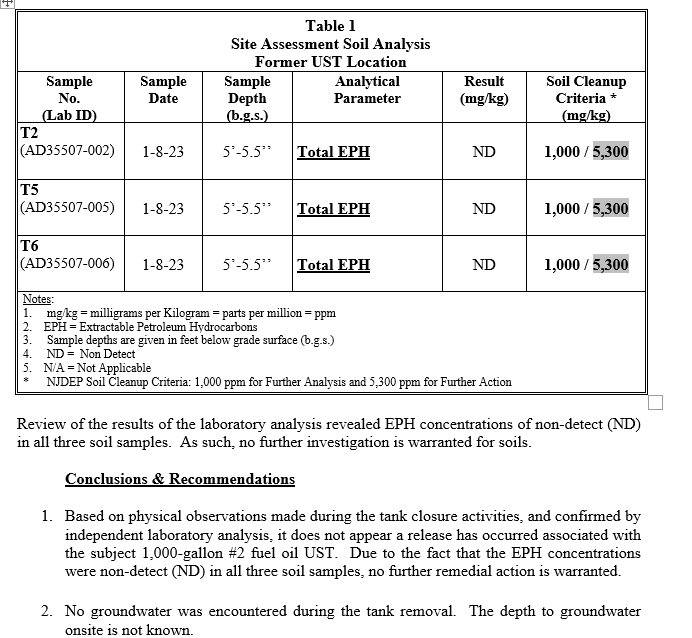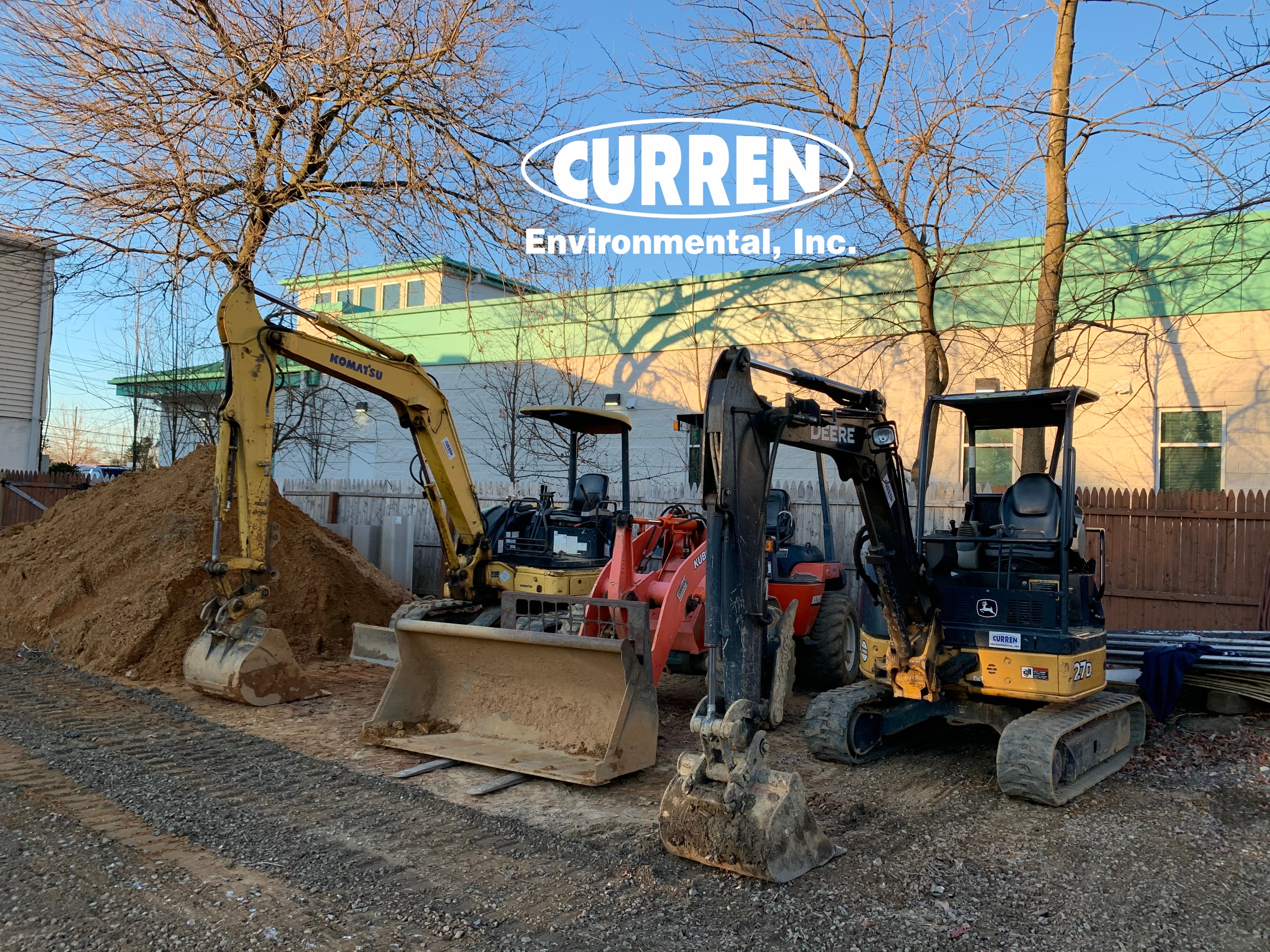Oil Tanks Abandoned in Place
If you are buying a home built before 1980, that home likely had oil heat as a fuel source. The owner may even disclose that an oil tank is filled in place on the property. You may think ok, great did you get a permit, oh you did and it was approved by the inspector great, no issue let's go to settlement.

You can ride that unicorn to the settlement table after that conversation for sure. Just don't let the unicorn fall into the hole created by removing that tank and digging up all the oil-impacted soil from the tank leak. Better ride the unicorn to the bank for the $40,000 it will take to clean up the tank leak.
The photo below had a filled-in-place oil tank, the buyer wanted it removed Curren Environmental removed the tank and cleaned up the leak, the cost was $52,000.

It is important to understand that the owner of a property is responsible for cleaning up contamination on the property.
If you purchase a property “As Is” then you assume liability for that cleanup. You are also responsible for cleaning up pollution that has traveled from your property onto another property.
If you buy a house with a filled-in-place oil tank, you own any contamination.
Pro Tip:
Oil tanks were filled in place so the owner would not see any holes in the oil tanks or have to report a leak. The exception to this is where the oil tank is by a pool or under a deck and removal would just cost too much money. Fine fill it in place but get soil samples and a report to prove it didn't leak.
Questions? Call 888-301-1050.
Fuel oil is lighter than water and it will penetrate soil until it encounters groundwater, then travel on the water's surface. Groundwater moves at different rates and can migrate great distances depending on the soil composition. A heating oil release includes any kind of spill or leak from the oil tank, oil delivery line, or another part of the heating system.
But wait, why be concerned about an oil tank that had a permit and was filled in place? Well if you have soil samples and report with a narrative stating the tank didn't leak and the soil samples are clean, you are fine. But that is the story that comes with the unicorns.
You see, any real estate transaction that involves an oil tank requires documentation that the buried oil tank has not leaked. The approval from the local municipality is not a safeguard or certification that the tank did not leak. The two approval stickers below both relate to underground oil tanks. One says that the tank was not approved and the other says it was approved. Which one leaked? They both leaked. Yes, I repeat that both tanks leaked, people think the white approval sticker means no contamination and they are wrong.


At Curren Environmental, we consistently receive calls regarding properties where an oil tank was previously filled with sand. Sometimes the owner has an approval sticker from the municipal construction office, other times they do not. But in most all cases the buyer assumes the tank didn't leak. That is a dangerous assumption with no quantifiable data supporting this belief.
In the environmental field, we assume paint has lead in it, and the insulation is asbestos until you prove otherwise. Rarely if ever is there any report narrative and testing data available to document that the oil tank did not leak. Sometimes the township no longer has a permit record, so it is just a lot of he said she said.
I took a section from an oil tank removal report for a site where the oil tank did not leak, it's only one page of about 40 pages but if you read it you can understand why we determined the oil tank did not leak.

For the record, no pun intended, the local approval is always meant to document a construction activity, that the tank was filled, meaning work was performed, however, this permit does not give evidence that the oil tank is cleaned and the oil tank did not leak. Construction permits approve "construction activities" not environmental contamination.
The problem with oil tanks that were previously abandoned in place is you don't know if the oil tank was properly cleaned (i.e., devoid of all residual oil and this was an empty metallic shell) and then filled with sand. The below oil tank was filled in place but never completely cleaned of oil. The oil tank shown below was never cleaned (cleaning is hard work) they just dumped sand in the oil tank.

Many homeowners have purchased homes without the knowledge of an abandoned underground oil tank on the property. This was not typically disclosed years ago, as there was little awareness of the environmental hazard presented by a leaking tank. Make sure to cover yourself from future risk during the transaction, if the home had a buried oil tank removed, get a copy of the oil tank closure report and any lab reports.
The best approach when you have an untested filled-in-place oil tank is to remove the tank and test the soils.
888-301-1050
The oil tank below was said to be cleaned and filled in place with foam, foam is not black in color, meaning the oil tank was never cleaned and that is oil on the foam. The oil tank leaked both buyer and seller were surprised.




